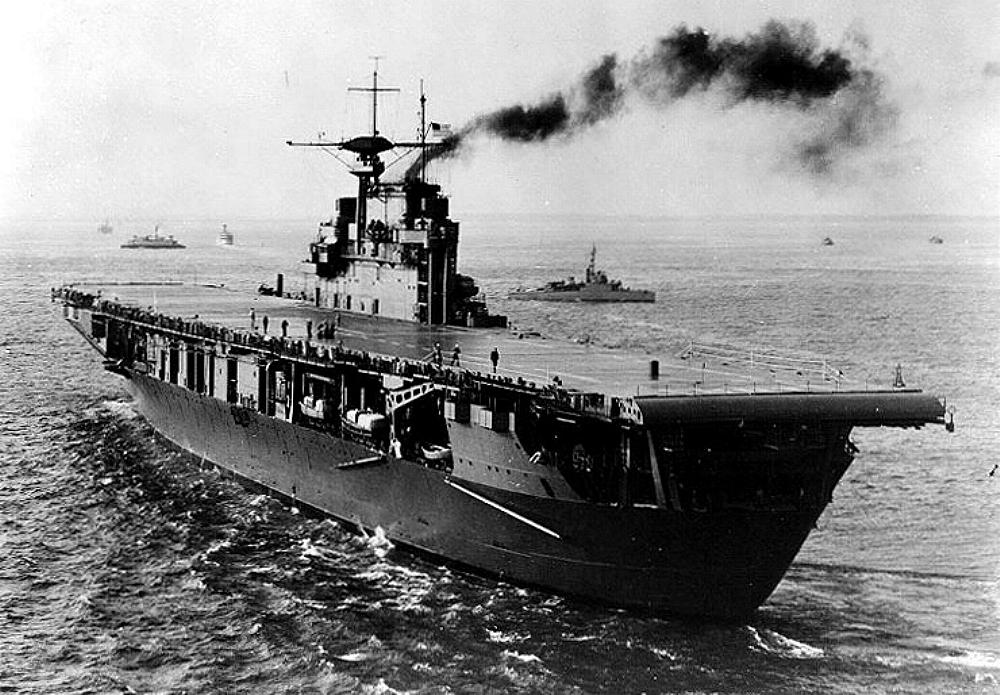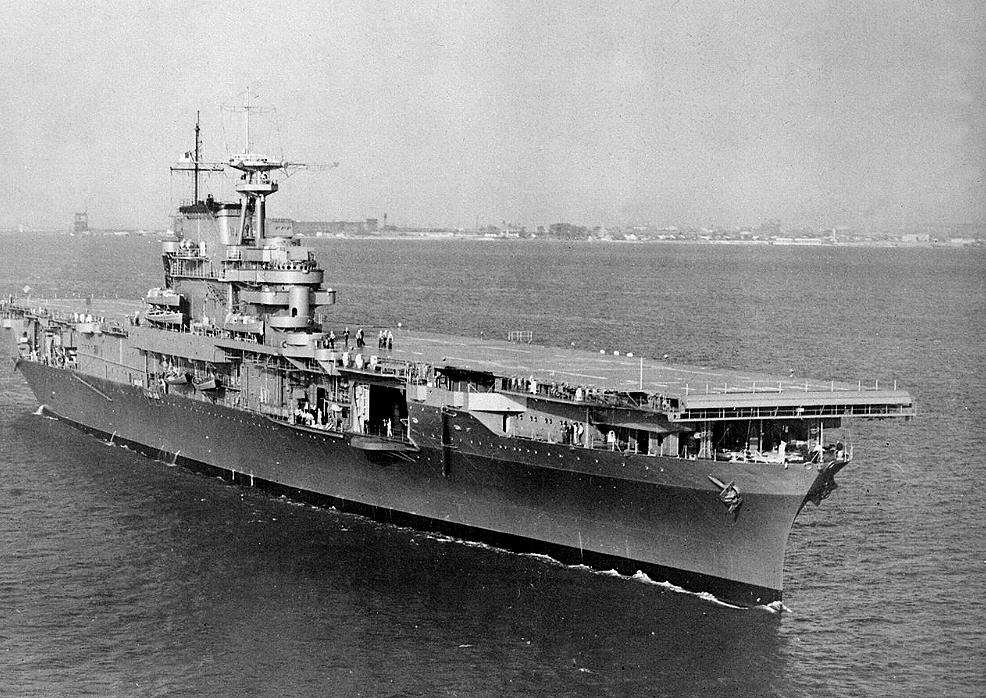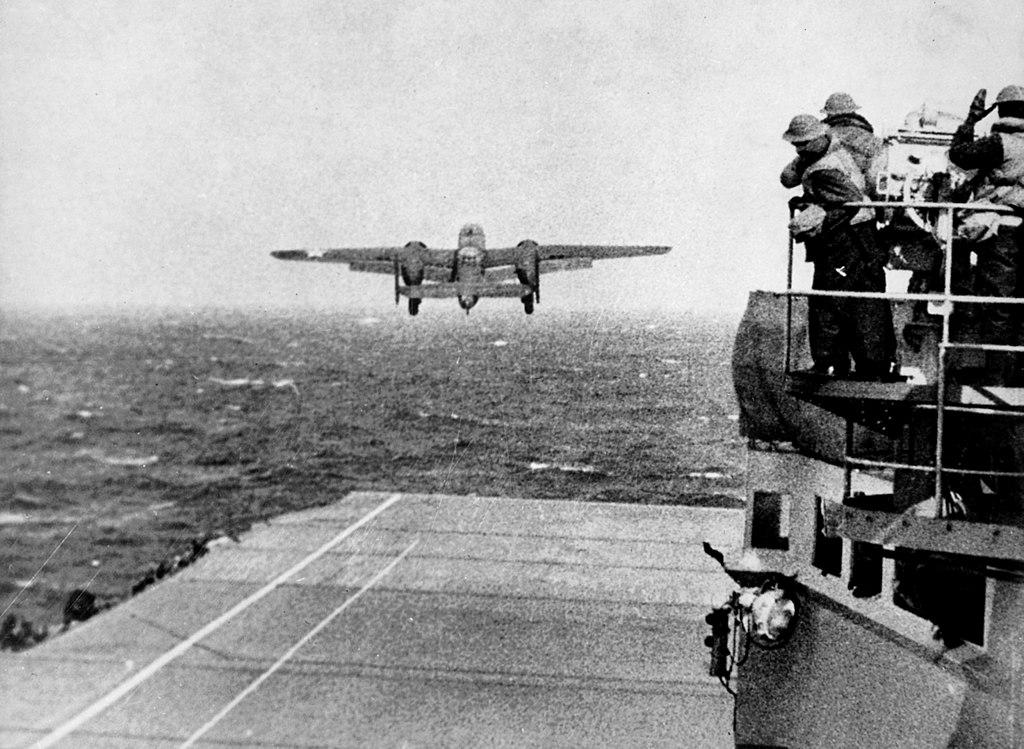USS Long Island (CVE-1) first found in USS Helena CL-50 War Diary for 2 September 1942,
.jpg)
USS Long Island (CVE-1) Awards
awards.jpg)
Name: USS Long Island
Laid down: 7 July 1939
Launched: 11 January 1940
Commissioned: 2 June 1941
Decommissioned: 26 March 1946
Struck: 12 April 1946
Fate: Scrapped in Belgium in 1977
General characteristics
Class and type: Long Island-class escort carrier
Displacement: 13,499 long tons (13,716 t)
Length: 492 ft (150 m)
Beam: 69 ft 6 in (21.18 m)
Draft: 25 ft 8 in (7.82 m)
Installed power: 8,500 hp (6,300 kW)
Propulsion:
1 × diesel engine
1 × shaft
Speed: 16.5 kn (19.0 mph; 30.6 km/h)
Complement: 970 officers and enlisted
Armament:
1 × 5 in (130 mm)/51 cal gun
2 × 3 in (76 mm)/50 cal guns
Aircraft carried: 21 |
USS Long Island (CVE-1) (originally AVG-1 and then ACV-1) was lead ship of her class
and the first escort carrier of the United States Navy. She was also the second ship to be
named after Long Island, New York. She was laid down on 7 July 1939, as the C-3 cargo
liner Mormacmail, under Maritime Commission contract, by the Sun Shipbuilding and Drydock
Company, Chester, Pennsylvania as Yard No 185, launched on 11 January 1940, sponsored
by Ms. Dian B. Holt, acquired by the Navy on 6 March 1941, and commissioned on 2 June 1941
as Long Island (AVG-1), Commander Donald B. Duncan in command.
In the tense months before the attack on Pearl Harbor, Long Island operated out of Norfolk, Virginia,
conducting experiments to prove the feasibility of aircraft operations from converted cargo ships.
The data gathered by her crew greatly improved the combat readiness of later "baby flattops".
Just after the Japanese attack, she escorted a convoy to Newfoundland and qualified carrier pilots
at Norfolk before departing for the West Coast on 10 May 1942. Reaching San Francisco on 5 June,
the ship immediately joined Admiral William S. Pye's four battleships and provided air cover while at
sea to reinforce Admiral Chester Nimitz's forces after their victory in the Battle of Midway. She left
the formation on 17 June and returned to the West Coast to resume carrier pilot training.
Long Island departed San Diego on 8 July and arrived Pearl Harbor on the 17th. After a training run
south to Palmyra Island, she loaded two squadrons of Marine Corps aircraft and got underway for
the South Pacific on 2 August. Touching at Fiji on 13 August, she then steamed to a point 200 mi
(170 nmi; 320 km) southeast of Guadalcanal and launched her aircraft (19 Grumman F4F Wildcats and
12 Douglas SBD Dauntless dive bombers).[2] These planes, the first to reach Henderson Field, were
instrumental in the Guadalcanal campaign and went on to compile a distinguished war record.
Her mission was accomplished. Reclassified ACV-1 on 20 August, Long Island sailed for Efate Island,
New Hebrides, and arrived on 23 August.
Long Island's actions at Guadalcanal are mentioned and seen in the movie Flying Leathernecks.
Long Island returned to the West Coast on 20 September, as the new "baby flattops" took up the slack
in the Pacific war zones. For the next year, the escort carrier trained carrier pilots at San Diego, an
unglamorous but vital contribution to victory. Long Island was reclassified CVE-1 on 15 July 1943.
In 1944–1945, she transported airplanes and their crews from the West Coast to various outposts in
the Pacific. After V-J Day, she revisited many of these same bases while transporting soldiers and
sailors back home during Operation Magic Carpet. |
USS Hornet (CV-8) first found in USS Helena CL-50 War Diary for 2 September 1942,

Hornet shortly after completion

USS Hornet (CV-8) Underway in Hampton Roads on 22 October 1941
USS Hornet Awards

USS Hornet and USS Nashville War Diary's
Name: USS Hornet
Ordered: 30 March 1939
Builder: Newport News Shipbuilding Company
Laid down: 25 September 1939
Launched: 14 December 1940
Sponsored by: Annie Reid Knox
Commissioned: 20 October 1941
Struck: 13 January 1943
Honors and awards:
American Defense Service Medal
American Campaign Medal
Asiatic-Pacific Campaign Medal
with (4 Battle Stars)
World War II Victory Medal
Fate: Sunk in the Battle of the Santa Cruz Islands, 26 October 1942
Notes: Last U.S. fleet carrier lost in action
Technical Specifications
USS Hornet (CV-8), the seventh ship to carry the name Hornet, was a
Yorktown-class aircraft carrier of the United States Navy. During World
War II in the Pacific Theater, she launched the Doolittle Raid on Tokyo and
participated in the Battle of Midway and the Buin-Faisi-Tonolai Raid. In
the Solomon Islands campaign she was involved in the capture and defense
of Guadalcanal and the Battle of the Santa Cruz Islands where she was
irreparably damaged by enemy torpedo and dive bombers. Faced with an
approaching Japanese surface force, Hornet was abandoned and later
torpedoed and sunk by approaching Japanese destroyers. Hornet was in
service for a year and six days and was the last US fleet carrier ever sunk
by enemy fire. For these actions, she was awarded four service stars, a citation
for the Doolittle Raid in 1995, and her Torpedo Squadron 8 received a Presidential
Unit Citation for extraordinary heroism for the Battle of Midway.
|

A B-25 takes off from Hornet. The Doolittle Raid on Tokyo.
Watch the movie: 30 Seconds Over Tokyo.
2 hours 18 minutes
During the period before the attack on Pearl Harbor, Hornet trained out of Norfolk. A hint of a
future mission occurred on 2 February 1942, when Hornet departed Norfolk with two Army Air
Forces B-25 Mitchell medium bombers on deck. Once at sea, the planes were launched to the
surprise and amazement of Hornet's crew. Her men were unaware of the meaning of this
experiment, as Hornet returned to Norfolk, prepared to leave for combat, and on 4 March sailed
for the West Coast via the Panama Canal .
Hornet arrived at Naval Air Station Alameda, California on 20 March 1942.[9] With her own planes
on the hangar deck, by midafternoon on 1 April she loaded 16 B-25s on the flight deck. Under the
command of Lieutenant Colonel James H. Doolittle, 70 United States Army Air Corps officers and
64 enlisted men reported aboard. In company of her escort, Hornet departed Alameda on 2 April
under sealed orders. That afternoon, Captain Mitscher informed his men of their mission:
a bombing raid on Japan.
Eleven days later, Hornet joined the aircraft carrier Enterprise off Midway, and Task Force 16
turned toward Japan.
With Enterprise providing combat air patrol cover, Hornet was to steam deep into
enemy waters. Originally, the task force intended to proceed to within 400 nmi (460 mi; 740 km)
of the Japanese coast; however, on the morning of 18 April, a Japanese patrol boat, No. 23 Nitto
Maru, sighted the American task force. Nashville sank the patrol boat. Amid concerns that the
Japanese had been made aware of their presence, Doolittle and his raiders were forced to launch
prematurely from 600 nmi (690 mi; 1,100 km) out instead of the planned 400 nmi (460 mi; 740 km).
Because of this decision, none of the 16 planes made it to their designated landing strip in China.
After the war, it was found that Tokyo received the Nitto Maru's message in a garbled form and
that the Japanese ship was sunk before it could get a clear message through to the Japanese mainland.
As Hornet came about and prepared to launch the bombers which had been readied for take-off the
previous day, a gale of more than 40 kn (46 mph; 74 km/h) churned the sea with 30 ft (9.1 m) crests;
heavy swells, which caused the ship to pitch violently, shipped sea and spray over the bow, wet the
flight deck and drenched the deck crews. The lead plane, commanded by Colonel Doolittle, had only
467 ft (142 m) of flight deck, while the last B-25 hung its twin rudders far out over the fantail. Doolittle,
timing himself against the rise and fall of the ship's bow, lumbered down the flight deck, circled Hornet
after take-off, and set course for Japan. By 09:20, all 16 were airborne, heading for the first American
air strike against the Japanese home islands.[12]
Hornet brought her own planes on deck as Task Force 16 steamed at full speed for Pearl Harbor.
Intercepted broadcasts, both in Japanese and English, confirmed at 14:46 the success of the raids.
Exactly one week to the hour after launching the B-25s, Hornet sailed into Pearl Harbor. That the
Tokyo raid was the Hornet's mission was kept an official secret for a year; until then President Roosevelt
referred to the ship from which the bombers were launched only as "Shangri-La". Two years later,
the Navy would give this name to an aircraft carrier.
Hornet steamed from Pearl Harbor on 30 April to aid Yorktown and Lexington at the Battle of the Coral Sea,
but the battle ended before she reached the scene. On 4 May Task Force 16 crossed the equator, the
first time ever for Hornet. After executing, with Enterprise, a feint towards Nauru and Banaba (Ocean)
islands which caused the Japanese to cancel their operation to seize the two islands, she returned to
Hawaii on 26 May, and sailed two days later to help repulse an expected Japanese assault on Midway. |
USS Hornet and USS Nashville War Diary's


.jpg)
awards.jpg)



